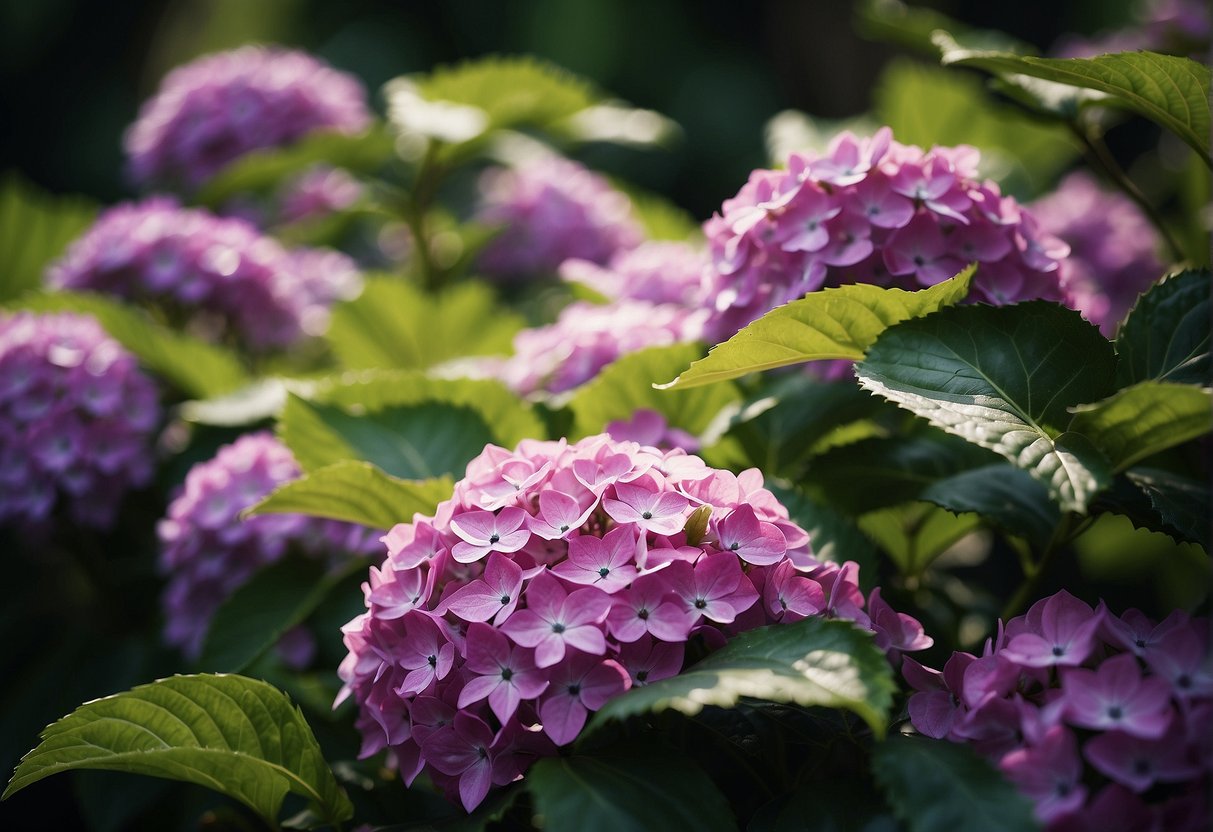I’ve often heard garden enthusiasts raving about the wonders of Holly Tone for acid-loving plants, and it’s not uncommon to see this same enthusiasm shared among hydrangea growers. As a plant nourisher at heart, I’ve always been curious about optimizing the health and bloom of hydrangeas, which are known for their lush foliage and vibrant flower heads. Holly Tone, a specialized slow-release fertilizer, enhances the soil’s acidity which is essential for certain hydrangea varieties to achieve their signature blue blooms.

Through my experience and research, I have found that the application of Holly Tone to hydrangea plants is generally beneficial. This fertilizer feeds the beneficial microbes in the soil, creating a rich environment that helps hydrangeas thrive. Before applying Holly Tone, it’s crucial to ensure the soil is moist, as applying it to dry soil can cause root burn. It’s advised to water the hydrangeas first and then spread the fertilizer around the base of the plant—never against the stem—following the specific guidelines mentioned on the product’s packaging.
JUMP TO TOPIC
Selecting the Right Fertilizer for Your Plants
When choosing a fertilizer for hydrangeas, I look for a product that accommodates their need for acidic soil conditions and provides balanced nutrition. The goal is to select a fertilizer that promotes lush foliage and vibrant blooms.
Understanding Soil pH and Nutrient Availability
Hydrangeas thrive in soil with a pH that favors acidity, typically between 5.0 and 5.5. This pH level optimizes the availability of essential nutrients. To modify the pH of my garden soil, I either apply lime to raise it or use sulfur to lower it. Testing soil pH is a crucial step before selecting fertilizers because some, like Holly-tone, are formulated specifically for acid-loving plants like hydrangeas.
Organic vs Synthetic Fertilizers
When deciding between organic and synthetic fertilizers, I prefer organic options like compost or Holly-tone for a few reasons. Organic fertilizers release nutrients slowly, improving soil health over time. Synthetic fertilizers provide quick results but can lead to nutrient run-off and may harm beneficial soil organisms.
The Role of Nitrogen, Phosphorus, and Potassium
Nitrogen, phosphorus, and potassium, the N-P-K values found on fertilizer packaging, each play a distinct role in plant health. Nitrogen encourages leafy growth, phosphorus supports root development and flowering, and potassium enhances overall vigor. For hydrangeas, I use a balanced fertilizer with slightly higher phosphorus to promote ample blooms.
Is Holly-tone good for hydrangeas? Yes, Holly-tone is suitable for hydrangeas, as it is formulated for acid-loving plants and provides a balanced release of essential nutrients.
Planting and Care for Acid-Loving Plants
When establishing a garden with acidophilic species like hydrangeas, the correct planting methods and care routines are imperative. I’ve found a reliable balance of soil pH, watering practices, light conditions, and the use of specific fertilizers like Holly-tone to be essential for the best growth and blooming.
Optimal Conditions for Hydrangeas and Other Acid-Loving Plants
As a gardener, I’ve learned that plants such as hydrangeas, rhododendrons, and azaleas—an illustrious group including camellias and blueberries—thrive in acidic soil with a pH range between 4.5 to 6.0. Ensuring they are planted in an area with partial shade and well-draining soil is critical. A layer of organic mulch helps retain moisture, regulate soil temperature, and gradually enrich the soil as it decomposes.
💥 Optimal Soil pH Range for Acid-Loving Plants: 4.5 to 6.0
When and How to Apply Holly-Tone
I apply Holly-tone, a granular fertilizer designed for acid-loving plants, in early spring and late fall. This product enriches the plants with necessary nutrients while lowering the soil pH. For established plants, I distribute Holly-tone at the plant’s drip line, which is the area directly below the outermost circumference of the branches. I follow with watering to help the fertilizer penetrate the soil.
| Plant Type | Fertilizer Dosage | Application Location | Application Time |
|---|---|---|---|
| New Plantings | 2 cups/cubic foot of soil | Mixed into soil | At planting |
| Established Plants | 1 tsp/3″ pot diameter | Around the pot’s edge | Early Spring/Late Fall |
| Garden Beds | 10 lbs./100 sq ft. | Mixed into top 4 inches of soil | Before planting |
Avoid applying Holly-tone on dry soil or when plants are suffering from stress due to drought, and do not let the granules touch the plant directly as this can cause burn.
Following these guidelines has certainly helped me to promote vigorous growth and vivid blooms in my acid-loving plants.
Seasonal Fertilization Schedules and Techniques
Proper timing and technique are crucial for fertilizing hydrangeas to encourage vibrant bloom and strong vegetative growth. I’ll cover how to use Holly Tone fertilizer, specifically tailored for these plants, to bolster their performance through the seasons.
Spring Fertilization for New Growth
In spring, the goal is to provide nourishment for new growth. Holly Tone should be applied to the soil’s surface, as I’ve found it’s an effective organic option for acid-loving plants like hydrangeas. For established garden beds, I use about 5 pounds per 100 square feet. It’s important to water the soil before application to avoid harm to the roots and to ensure nutrients are well-absorbed.
Preparing Plants for Winter with Fall Fertilization
Fall is a crucial time to prepare hydrangeas for the dormant winter season and the following year’s blooming.
I apply Holly Tone again in the fall, generally after the first frost when plants are starting to go dormant. This helps them maintain healthy roots throughout the cold and sets the stage for vibrant color and vigorous blooming in the growing season to come. For new garden beds, I double the spring amount to enrich the soil, fostering a stronger foundation for spring growth.












